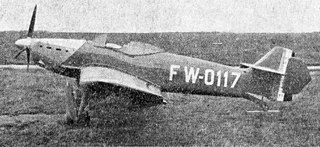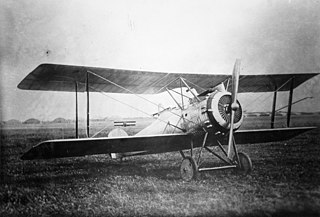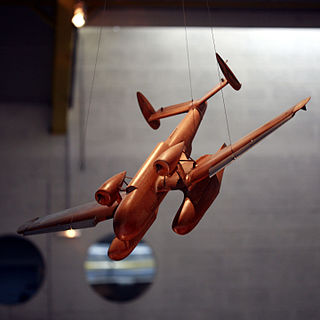Related Research Articles

The Dewoitine 37 was the first of a family of 1930s French-built monoplane fighter aircraft.

The Loire-Nieuport LN.40 aircraft were a family of French naval dive-bombers for the Aeronavale in the late 1930s, which saw service during World War II.

The Dewoitine D.21 was 1920s French open-cockpit, fixed-undercarriage monoplane fighter aircraft.

The Loire 210 was a French single-seat catapult-launched fighter seaplane designed and built by Loire Aviation for the French Navy.

The Hanriot HD.3 C.2 was a two-seat fighter aircraft produced in France during World War I.

The Potez 39 was a French two-seat single-engined parasol wing monoplane reconnaissance and observation aircraft of the 1930s.

The Farman NC.470 was a French twin-engined floatplane designed as a crew trainer for the French Navy. It was used in small numbers for both its intended role as a trainer and as a coastal reconnaissance aircraft at the start of World War II.

The Loire-Nieuport 10 was a 1930s French prototype long-range maritime reconnaissance and combat floatplane produced by Loire-Nieuport, a joint venture between Loire Aviation and Nieuport-Delage. It was an attempt to answer the requirements for the Navy's programme Hydravion éclaireur de combat for a large floatplane capable of acting as a torpedo bomber or reconnaissance aircraft.
The Bréguet 790 Nautilus was a prototype French three-seat coastal patrol flying-boat designed and built by Bréguet Aviation to meet a requirement from the French navy.
The Bloch MB.480 was a French twin-engined torpedo-bomber/reconnaissance floatplane designed just before the start of the Second World War by Société des Avions Marcel Bloch. Only two were built, the French Navy deciding to use landplanes instead.

The SNCAO CAO.600 was a French prototype twin-engined torpedo-bomber of the Second World War. It was intended to operate from two new aircraft carriers of the French Navy, but only a single example had been completed and flown when the surrender of France in June 1940 ended development of the aircraft.
The Dewoitine D.750 was a prototype French twin-engined torpedo bomber. It was designed prior to the outbreak of the Second World War to operate from the aircraft carriers of the French Navy, but only a single example was completed, with development ended by France's defeat by Germany in June 1940.

The Bernard H.52 was a French floatplane fighter aircraft of the 1930s. It was a single engine, single-seat monoplane built in the hope of being selected by the French Navy. Two prototypes were built, but no production followed.
The SNCASE SE-400 was a prototype French twin-engined coastal patrol floatplane of the Second World War. A single example was flown, but development was abandoned in May 1940 owing to the German invasion of France.
The Dewoitine D.15 was a single-engine, single-seat biplane fighter aircraft built in France in the 1920s. Intended to offer structural simplifications when compared with monoplanes, it had a disappointing performance and was soon abandoned.
The Dewoitine D.720 T3 was a French reconnaissance/cooperation aircraft built by Dewoitine in the late 1930s.
The SNCAC NC-420 was a French observation flying boat built by SNCAC in the 1940s. It was intended to operate from the ships of the French Navy, but although a single prototype was completed, it never flew.
The SNCASE SE.580 was a prototype fighter designed during World War II by the French aircraft company SNCASE. Loosely based on the pre-war Dewoitine D.520, it was intended to be powered by a Hispano-Suiza 24Z piston engine. Production began on a single prototype, but the program was cancelled before it was completed.
The Dewoitine HD.780 was a prototype French fighter-floatplane designed and built from 1938–40. It was a single-seat, single-engined aircraft based on the Dewoitine D.520 land-based fighter. A single example was built but was abandoned unflown, and was scrapped.
The Gourdou G.120 Hy was a prototype French shipboard reconnaissance floatplane. A single prototype was completed, flying for the first time in June 1940, but was destroyed later that month to avoid capture by German troops.
References
- Green, William. War Planes of the Second World War: Volume Six Floatplanes. London:Macdonald, 1962.